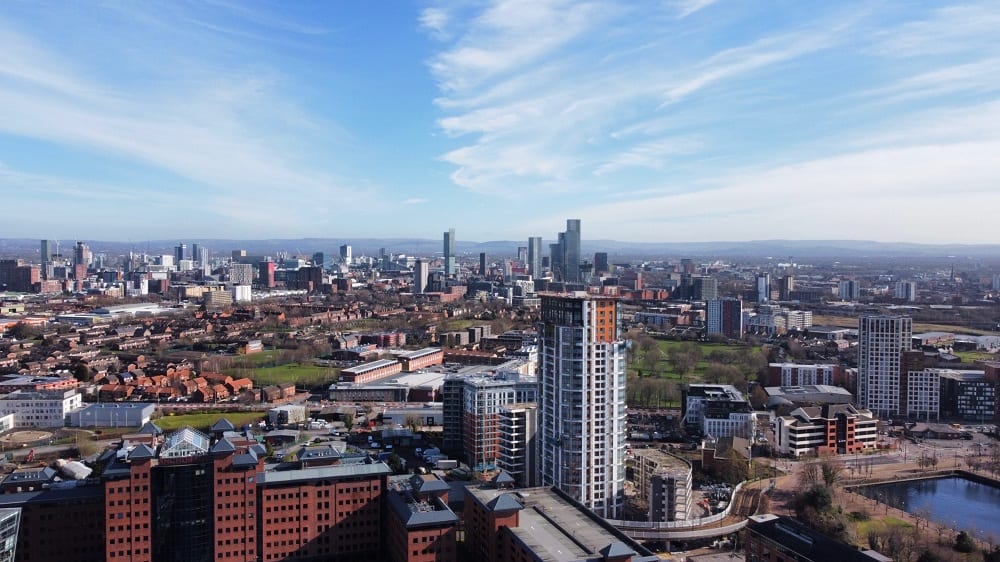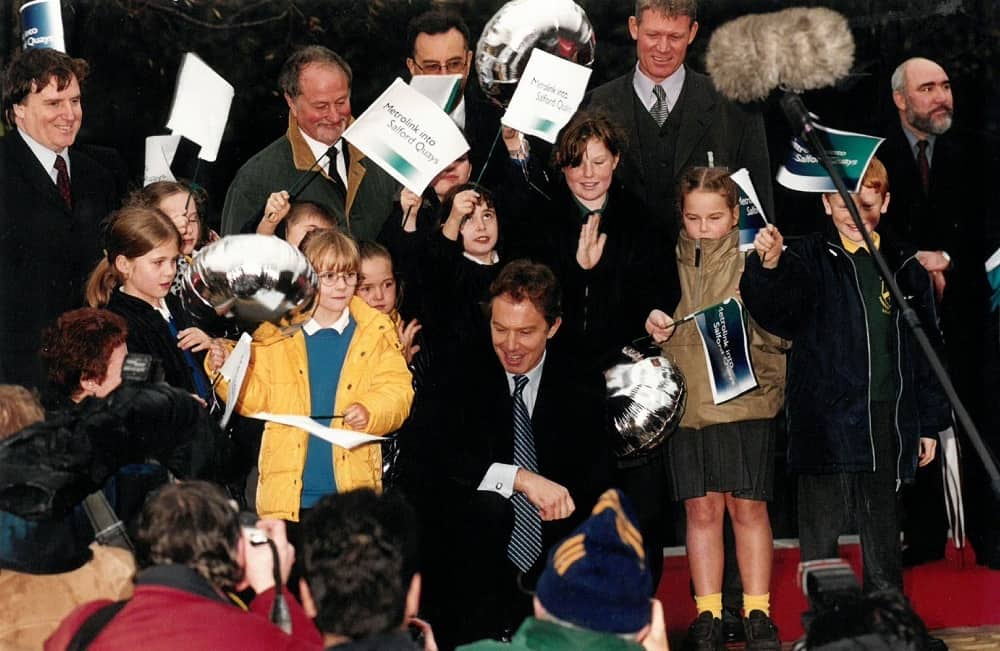
How the city of Salford shook off its ‘dirty old town’ image
For many years Salford was seen, fairly or unfairly, as the less desirable part of Manchester’s city conurbation.
Its industrial heritage is immortalised in the famous paintings of L.S. Lowry, and it was famously depicted by folk singer Ewan McColl as a ‘dirty old town’. Then as the docks closed in the 1980s, like many industrial hubs it lost its way. Perhaps inevitably it earned a name for itself as being slightly more edgy and slightly less safe than its neighbour over the river Irwell. Somewhere, perhaps, to avoid.
Fast forward to 2022, and the crane count over Salford tells a different story. An anecdotal but undeniable indication of development, growth and investment, the sky over Salford is littered with cranes big and small. Salford is rising, literally as well as metaphorically, to great heights.
How has it achieved this transformation?
By embracing change, making the most of opportunities and having a positive, collaborative outlook.
Embracing its natural assets
A city of contrasts, Salford boasts a tremendous amount of green space as well as a dense urban centre. The sweeping meanders of the river Irwell have created the Meadow and Peel Park while Kersal Wetlands is a surprisingly vast green lung which was recently transformed into a £10m flood storage basin. It was jointly funded by the Environment Agency, central government and Salford City Council, and now doubles up as a fantastic nature reserve.
In 2020 Salford was voted the greenest place to live in England and Wales. And that was before RHS Bridgewater opened in 2021, only enhancing the city’s ‘green’ status.
Embracing its heritage
Many urban rivers and waters across our nation’s cities have been culverted, hidden underneath roads and development. But the quays at Salford were wisely embraced early on. These unique historic features provided the backdrop and sense of place and permanence on which to establish a new neighbourhood, Salford Quays.
After the docks closed in 1982, the council took the decision to buy them and, in 1985 produced a Development Plan for Salford Quays, setting out its vision for its redevelopment for a third commercial offices, a third residential and a third leisure. Two years later and there was already a plan for a metrolink to come to Salford Quays, and a vision for a performing arts centre. Sound familiar?
It’s quite amazing reading about the bold vision set out nearly 40 years and looking at the place in the present day. More people now work in Salford Quays than in its heyday as a major seaport.
The second branch of the Metrolink tram extended out to Salford Quays and was opened by Tony Blair in 1999. Since then quays haven’t looked back. With the light rail transport system offering such a convenient route into the city centre, it certainly doesn’t feel like it’s over 2km from the city centre.

Embracing culture and media
A key aspect of the original vision for Salford Quays was for a flagship performing arts destination, and eventually, the Lowry Theatre was born.
When the BBC moved its news, sports and children’s teams up to Salford in 2011, part of the quays was rebranded as MediaCityUK and is now a destination in its own right. Today, when you look around MediaCity you can see what an impact that initial relocation had, with ITV, a University of Salford campus, and numerous other businesses within the media space.
By having a strategy of focusing on cultural and media-related uses, the area has carved out a strong, unique identity which is one of the key ingredients for good placemaking.
Embracing industry and logistics
Although Salford embraced a new identity in culture and media, it chose not to sever connections with its industrial past.
Port Salford, the multi-modal freight terminal situated on the northern bank of the Manchester Ship Canal is the UK’s first tri-modal port facility and distribution park served by rail, road and water. Our directors acted for Peel L&P back in the early 2000s to get the land allocated and also to secure the original planning consents for the significant project.
As with Salford Quays and Media City, this early and ambitious scheme at Port Salford has served as a catalyst for other development (the AJ Bell Stadium) and other land allocations for retail.
Embracing people
Finally, Salford has embraced people, by delivering high numbers of new homes.
The city council has understood the opportunity that its position in the heart of Greater Manchester has presented and understood the multiplier effect that inward investment would have. It has been proactive to work with developers and to get things done.
As a result, it has a strong housing supply position (9.7 years) and a growing, active population with many people choosing to live in Salford over other parts of Greater Manchester, including our very own senior planner, Thomas O’Kane. Asked why, he said he wanted to live somewhere well connected and that was dynamic and going places.
So, has Salford ‘levelled up’?
With all this ambitious and exciting development over the last few decades, then, does that mean the council can sit back, dust off their hands and say ‘job done’?
Of course not. We know that creating growth – that benefits whole societies, including those most in need – takes time and investment (in both senses of the word).
Salford still struggles with deprivation and inequalities. It’s ranked the 24th most income-deprived local authority in England, with 64 out of its 150 neighbourhoods among the 20% most income-deprived in England.
A whole plethora of interventions are needed to truly address inequalities (such as free school meals, access to better health care etc), but when it comes to the built environment it’s about the provision of quality affordable accommodation that meets a need and is in the right place.
Achieving real regeneration and ‘healthy’ growth is an ongoing process, and requires local authorities to be visionary but agile, adapting to changing circumstances like Covid-19 and a changing economic climate. And, importantly, to work in partnership with developers and investors to make things happen.
The important question is what is driving your local authority. Is it driven by maintaining a comfortable status quo or is it driven to tackle inequality and see change?
The changes that we’ve witnessed in Salford over the last four decades haven’t happened by accident. They are the result of a driven local authority that has the ambition and willingness to work in partnership with the private sector and other key stakeholders to drive change.
Salford has transformed from its post-industrial woes into a dynamic, exciting place to live. There’s plenty still to be done, but from where we’re standing, they’re on the right track.